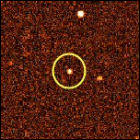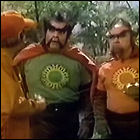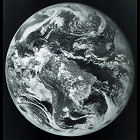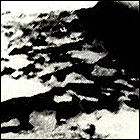Shazam!: Double Trouble
 The 19th episode of Filmation’s live-action Shazam! series airs on CBS, starring Michael Gray and Les Tremayne. John Davey takes over the role of Captain Marvel from this episode forward.
The 19th episode of Filmation’s live-action Shazam! series airs on CBS, starring Michael Gray and Les Tremayne. John Davey takes over the role of Captain Marvel from this episode forward.
More about Shazam! in the LogBook and theLogBook.com Store
Shazam! now streaming on Amazon Prime

 ABC airs the fourth episode of Sid & Marty Krofft’s The Lost Saucer, starring Jim Nabors (The Andy Griffith Show, Gomer Pyle USMC) and Ruth Buzzi (Rowan & Martin’s Laugh-In). Billy Barty guest stars.
ABC airs the fourth episode of Sid & Marty Krofft’s The Lost Saucer, starring Jim Nabors (The Andy Griffith Show, Gomer Pyle USMC) and Ruth Buzzi (Rowan & Martin’s Laugh-In). Billy Barty guest stars. The 38th episode of The Six Million Dollar Man is broadcast on ABC, starring Lee Majors and Richard Anderson. Chuck Connors (The Rifleman, Werewolf) guest stars.
The 38th episode of The Six Million Dollar Man is broadcast on ABC, starring Lee Majors and Richard Anderson. Chuck Connors (The Rifleman, Werewolf) guest stars. NBC airs the
NBC airs the  Astronomers catch fleeting glimpses of a new natural satellite of Jupiter, Themisto, though the initial estimates of its orbit are “off” enough that Themisto becomes “lost” and isn’t observed again until 2000. With a diameter of roughly five miles, Themisto marks the dividing line between the larger inner moons of Jupiter and the widely-scattered menagerie of asteroid-like outer moons orbiting the planet. Astronomers Elizabeth Roemer and Charles Kowal (who discovered another new Jovian moon in 1974) share credit for discovering the moon. Themisto is the last Jovian satellite to be discovered by ground-based telescope in the 20th century.
Astronomers catch fleeting glimpses of a new natural satellite of Jupiter, Themisto, though the initial estimates of its orbit are “off” enough that Themisto becomes “lost” and isn’t observed again until 2000. With a diameter of roughly five miles, Themisto marks the dividing line between the larger inner moons of Jupiter and the widely-scattered menagerie of asteroid-like outer moons orbiting the planet. Astronomers Elizabeth Roemer and Charles Kowal (who discovered another new Jovian moon in 1974) share credit for discovering the moon. Themisto is the last Jovian satellite to be discovered by ground-based telescope in the 20th century. The
The  The fifth episode of Gerry Anderson’s space adventure series
The fifth episode of Gerry Anderson’s space adventure series  The
The  NBC airs the
NBC airs the  The
The  The sixth episode of Gerry Anderson’s space adventure series
The sixth episode of Gerry Anderson’s space adventure series  The
The  The first in a new generation of weather satellites operating in geosynchronous orbit for the National Oceanic & Atmospheric Administration, GOES-1, is launched from Cape Canaveral. An acronym for Geostationary Operational Environmental Satellite, GOES-1 is positioned over the Indian Ocean, where it is expected to become but the first in a constellation of weather satellites monitoring Earth’s atmosphere in both visible and infrared light. In
The first in a new generation of weather satellites operating in geosynchronous orbit for the National Oceanic & Atmospheric Administration, GOES-1, is launched from Cape Canaveral. An acronym for Geostationary Operational Environmental Satellite, GOES-1 is positioned over the Indian Ocean, where it is expected to become but the first in a constellation of weather satellites monitoring Earth’s atmosphere in both visible and infrared light. In  The seventh episode of Gerry Anderson’s space adventure series
The seventh episode of Gerry Anderson’s space adventure series  NBC airs the
NBC airs the  Virgin Records releases
Virgin Records releases  The Soviet
The Soviet  The
The  The eighth episode of Gerry Anderson’s space adventure series
The eighth episode of Gerry Anderson’s space adventure series